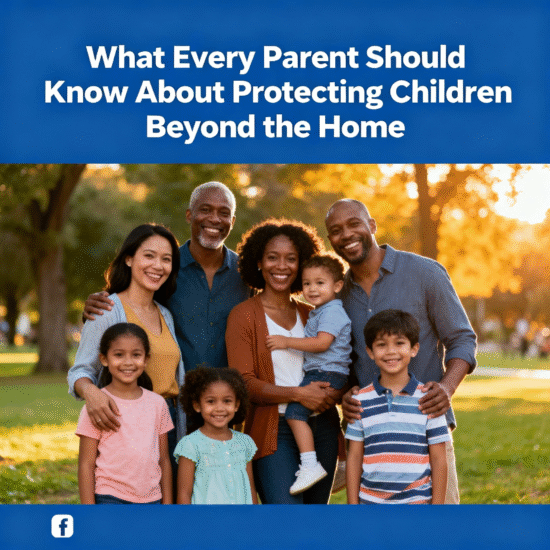
Parents pour a lot into making the home feel safe. We check the locks, set sensible screen time limits, and practice street safety basics. Once kids head to class, practice, or a neighbor’s kitchen table, the circle widens and more adults share the job.
It’s a reminder to focus on what works. Keep the conversations going, keep family rules clear, and stay a little more aware. Small habits make a real difference.
Contents
Building Trust Through Open Conversations
Kids talk more when they feel heard. Leave the door open with small, everyday check-ins. Try a quick question in the carpool line, “Who surprised you today?” Or at bedtime, “Did anything feel confusing or uncomfortable?” Keep it casual so kids don’t feel quizzed.
When children see their thoughts taken seriously, they bring you the hard moments, too. There is no single talk that covers everything. Aim for a thread that runs through the week. Listen first. Keep your voice calm. A steady pattern makes it easier for kids to come to you when something feels off.
Teaching Kids About Boundaries and Awareness
Plain language helps. Explain personal space and body boundaries in ways that fit your child’s age. For younger kids, simple rules work best. Your body belongs to you. If someone makes you uncomfortable, tell a trusted adult.
As kids grow, widen the conversation to friendships, group activities, and online spaces. Encourage them to trust their instincts. If a situation feels wrong, they can leave, say no, and ask for help. Adults should also respect those boundaries. Revisit these ideas frequently so they become ingrained.
Real cases, such as the IYC Harrisburg sexual abuse lawsuit, remind families that attention to community settings matters. Teaching kids to speak up and stay in touch with the adults who supervise them can change outcomes.
Staying Aware of Community Risks
Most schools, teams, and clubs are run by individuals who genuinely care about children. Parents can still play an active role. Ask how groups screen volunteers. Look at adult-to-child ratios. Learn how concerns are handled. Clear answers build trust.
Watch the basics. Are doors left open during lessons? Do leaders keep activities visible? Do adults rotate duties so no one is alone with a child? Programs that encourage parent involvement often foster stronger safety habits. Staying observant does not mean living in fear. It shows kids their well-being matters and that adults are paying attention.
Everyday Habits That Strengthen Protection
Use the same practical tools that keep a busy home on track.
Say hello to teachers, coaches, babysitters, and program leaders, and then check in with them from time to time.
Set a few simple rules. Check in before leaving with anyone. Stick with a buddy at big events. Call or text after practice.
Ask open-ended questions after activities. What was the best part? Anything feel off? Short chats reveal a lot over time.
Put safety touchpoints on the family calendar. A monthly caregiver check-in, a quick review of pickup plans, and a reminder to refresh the list of trusted adults on the fridge.
For step-by-step guidance you can use today, review RAINN’s tips for caregivers. The advice fits easily into busy routines and reinforces habits you are already building.
Empowering Kids With Confidence
Confidence helps kids speak up when something feels wrong. Build it in small ways. Praise effort. Ask for their opinions. Offer choices that match their age. When children see their decisions matter, they learn their boundaries matter too.
Confident kids handle peer pressure more effectively and recognize unhealthy situations sooner. Remind them it is always okay to walk away, to say no, and to tell a trusted adult. Repeat those truths. They become tools kids carry everywhere.
Raising children to trust themselves creates an inner shield that follows them, even when you are not there.
Conclusion
Protecting children beyond the home means providing them with the tools and support they need to feel safe wherever they are. Honest conversations, clear boundaries, attention to community practices, and consistent habits work together to protect families.
Parents cannot control every setting, but they can shape a strong base at home. Check in with caregivers. Ask open questions after activities. Reinforce a child’s right to say no. Those simple moves add up. Because modern parenting spans playgrounds and phone screens alike, thoughtful resources for modern parenting can offer even more ways to stay connected and supported.
